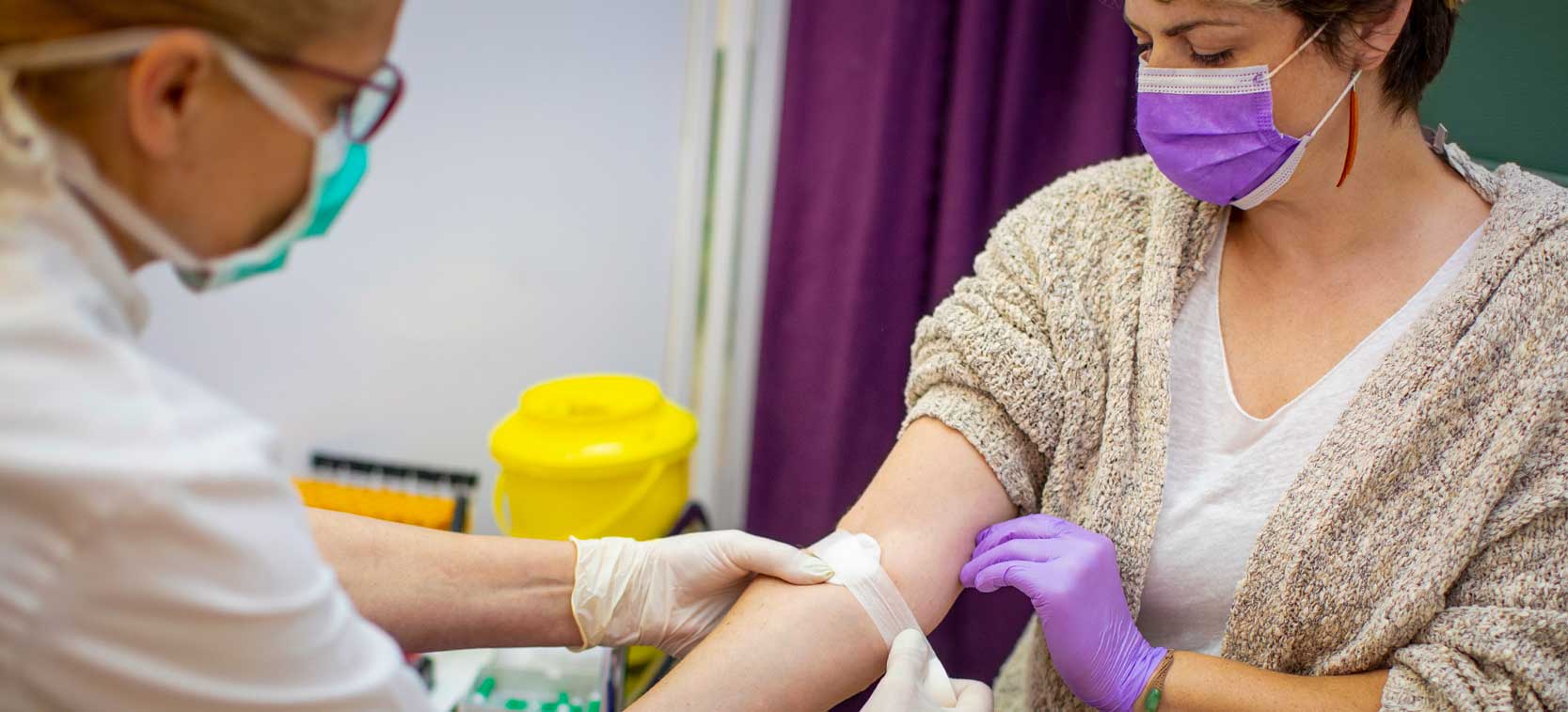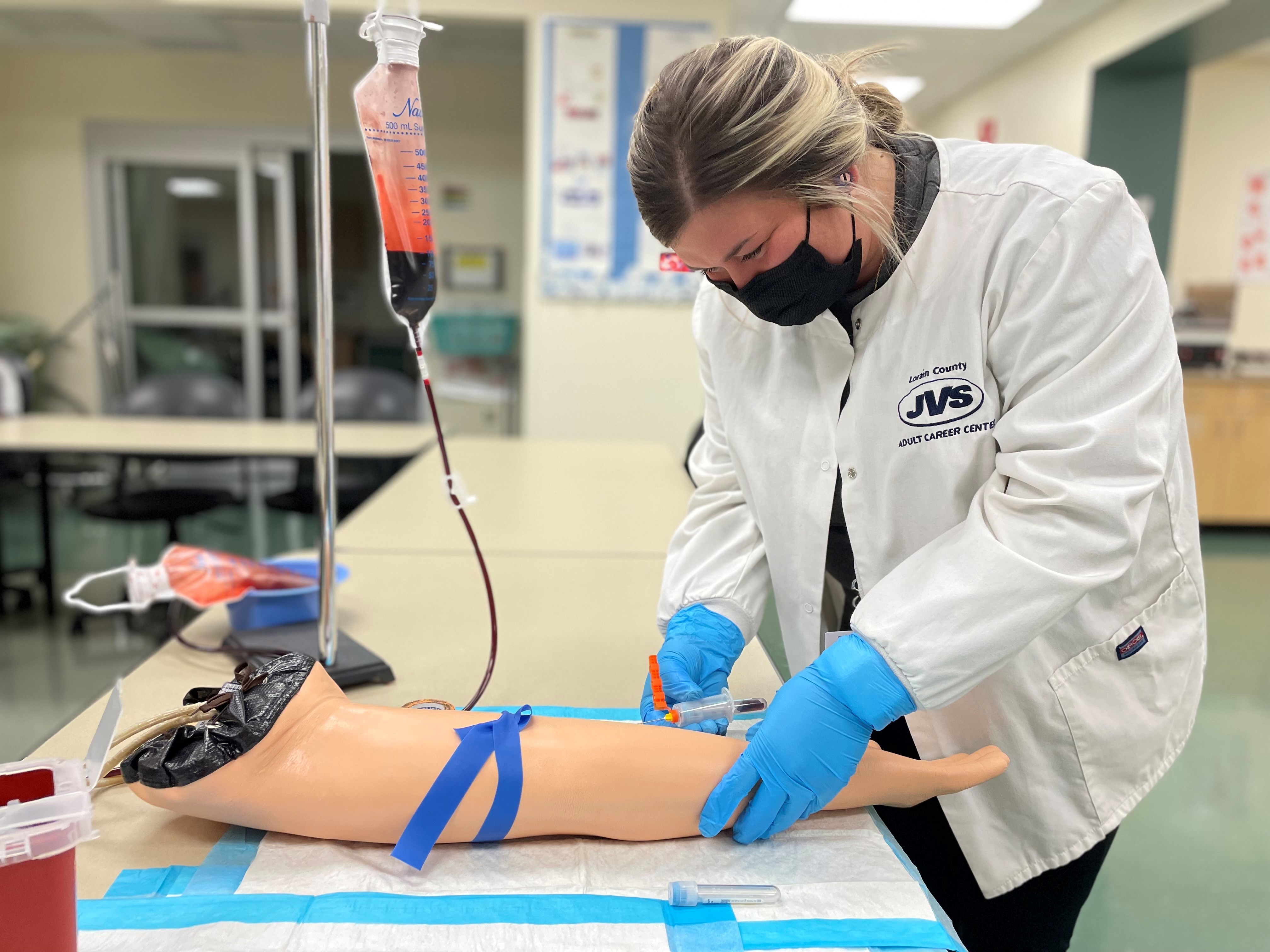An Unbiased View of Northeast Medical Institute - New Haven Campus Phlebotomy Course & Cna Class
An Unbiased View of Northeast Medical Institute - New Haven Campus Phlebotomy Course & Cna Class
Blog Article
The Main Principles Of Northeast Medical Institute - New Haven Campus Phlebotomy Course & Cna Class
Table of ContentsThe Ultimate Guide To Northeast Medical Institute - New Haven Campus Phlebotomy Course & Cna ClassThe Only Guide to Northeast Medical Institute - New Haven Campus Phlebotomy Course & Cna ClassAll About Northeast Medical Institute - New Haven Campus Phlebotomy Course & Cna ClassWhat Does Northeast Medical Institute - New Haven Campus Phlebotomy Course & Cna Class Mean?Northeast Medical Institute - New Haven Campus Phlebotomy Course & Cna Class for DummiesNot known Facts About Northeast Medical Institute - New Haven Campus Phlebotomy Course & Cna Class
The usage of such gadgets need to be come with by various other infection avoidance and control techniques, and training in their usage. Not all security tools are appropriate to phlebotomy. Prior to picking a safety-engineered tool, individuals ought to completely examine offered tools to identify their proper use, compatibility with existing phlebotomy practices, and effectiveness in shielding team and individuals (12, 33).For settings with reduced resources, cost is a driving factor in purchase of safety-engineered devices. Where safety-engineered devices are not available, knowledgeable use of a needle and syringe is appropriate.
One of the crucial pens of high quality of care in phlebotomy is the participation and cooperation of the client; this is equally beneficial to both the health and wellness worker and the person. Clear details either written or verbal need to be available to every person that undertakes phlebotomy. Annex F offers example text for discussing the blood-sampling procedure to an individual. labelling); transportation conditions; interpretation of results for medical monitoring. In an outpatient division or clinic, provide a specialized phlebotomy workstation containing: a clean surface with two chairs (one for the phlebotomist and the other for the individual); a hand laundry basin with soap, running water and paper towels; alcohol hand rub. In the blood-sampling space for an outpatient division or facility, give a comfy reclining sofa with an arm rest.
Getting The Northeast Medical Institute - New Haven Campus Phlebotomy Course & Cna Class To Work
Guarantee that the signs for blood sampling are plainly defined, either in a composed procedure or in documented directions (e.g. in a lab form). Collect all the equipment needed for the treatment and place it within risk-free and easy reach on a tray or trolley, making sure that all the items are clearly noticeable.
Introduce yourself to the patient, and ask the client to specify their full name. Inspect that the lab type matches the client's identification (i.e. match the client's details with the laboratory form, to guarantee precise recognition).
Make the person comfy in a supine placement (when possible). Location a clean paper or towel under the patient's arm. Go over the test to be executed (see Annex F) and acquire verbal permission. The individual has a right to decline a test at any type of time prior to the blood tasting, so it is very important to make certain that the person has actually recognized the procedure.
Northeast Medical Institute - New Haven Campus Phlebotomy Course & Cna Class Things To Know Before You Get This
Extend the individual's arm and inspect the antecubital fossa or lower arm. Situate a blood vessel of a good dimension that is visible, straight and clear.
DO NOT place the needle where blood vessels are drawing away, because this enhances the chance of a haematoma. Situating the blood vessel will certainly aid in determining the correct size of needle.
Haemolysis, contamination and existence of intravenous liquid and medication can all change the outcomes (39. Nursing staff and doctors might access central venous lines for samplings following methods. Samplings from main lines carry a risk of contamination or erroneous lab examination outcomes. It is appropriate, but not perfect, to draw blood samplings when initial introducing an in-dwelling venous gadget, before connecting the cannula to the intravenous liquids.
The Only Guide to Northeast Medical Institute - New Haven Campus Phlebotomy Course & Cna Class
Failing to enable enough contact time increases the risk of contamination. DO NOT touch the cleaned site; in particular, DO NOT put a finger over the blood vessel to guide the shaft of the subjected needle.
Ask the person to develop a clenched fist so the capillaries are a lot more famous. Enter the capillary quickly at a 30 degree angle or much less, and continue to introduce the needle along the vein at the most convenient angle of entry - CNA Courses. As soon as adequate blood has been collected, release the tourniquet BEFORE withdrawing the needle
The Ultimate Guide To Northeast Medical Institute - New Haven Campus Phlebotomy Course & Cna Class
Take out the needle gently and apply gentle pressure to the site with a clean gauze or completely dry cotton-wool ball. Ask the patient to hold the gauze or cotton woollen in position, with the arm expanded and increased. Ask the individual NOT to bend the arm, since doing so creates a haematoma.

Northeast Medical Institute - New Haven Campus Phlebotomy Course & Cna Class Fundamentals Explained
Do not press the syringe bettor because added pressure increases the danger of haemolysis. Where feasible, keep the tubes in a shelf and move the rack towards you. Infuse downwards right into go to this site the ideal coloured stopper. DO NOT remove the stopper because it will release the vacuum. If the sample tube does not have a rubber stopper, inject extremely slowly right into television as reducing the stress and rate made use of to move the sampling minimizes the danger of haemolysis.

Report this page